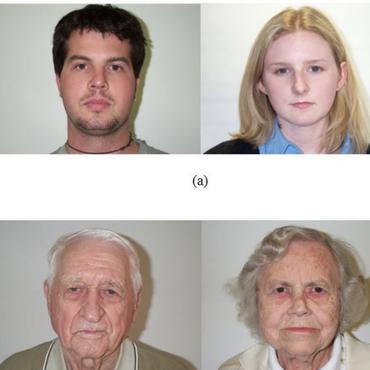Search Results for author: Jonathan Svirsky
Found 7 papers, 4 papers with code
Self Supervised Correlation-based Permutations for Multi-View Clustering
no code implementations • 26 Feb 2024 • Ran Eisenberg, Jonathan Svirsky, Ofir Lindenbaum
Fusing information from different modalities can enhance data analysis tasks, including clustering.
Interpretable Deep Clustering
no code implementations • 7 Jun 2023 • Jonathan Svirsky, Ofir Lindenbaum
Furthermore, we verify that our model leads to interpretable results at a sample and cluster level.
SG-VAD: Stochastic Gates Based Speech Activity Detection
1 code implementation • 28 Oct 2022 • Jonathan Svirsky, Ofir Lindenbaum
Our key idea is to model VAD as a denoising task, and construct a network that is designed to identify nuisance features for a speech classification task.
 Ranked #3 on
Activity Detection
on AVA-Speech
(ROC-AUC metric)
Ranked #3 on
Activity Detection
on AVA-Speech
(ROC-AUC metric)
Discovery of Single Independent Latent Variable
1 code implementation • 12 Oct 2021 • Uri Shaham, Jonathan Svirsky, Ori Katz, Ronen Talmon
Latent variable discovery is a central problem in data analysis with a broad range of applications in applied science.
Deep Unsupervised Feature Selection by Discarding Nuisance and Correlated Features
1 code implementation • 11 Oct 2021 • Uri Shaham, Ofir Lindenbaum, Jonathan Svirsky, Yuval Kluger
Experimenting on several real-world datasets, we demonstrate that our proposed approach outperforms similar approaches designed to avoid only correlated or nuisance features, but not both.
Deep Ordinal Regression using Optimal Transport Loss and Unimodal Output Probabilities
no code implementations • 15 Nov 2020 • Uri Shaham, Igal Zaidman, Jonathan Svirsky
We empirically analyze the different components of our proposed approach and demonstrate their contribution to the performance of the model.
 Ranked #8 on
Age And Gender Classification
on Adience Age
Ranked #8 on
Age And Gender Classification
on Adience Age
Differentiable Unsupervised Feature Selection based on a Gated Laplacian
1 code implementation • NeurIPS 2021 • Ofir Lindenbaum, Uri Shaham, Jonathan Svirsky, Erez Peterfreund, Yuval Kluger
In this paper, we present a method for unsupervised feature selection, and we demonstrate its use for the task of clustering.




